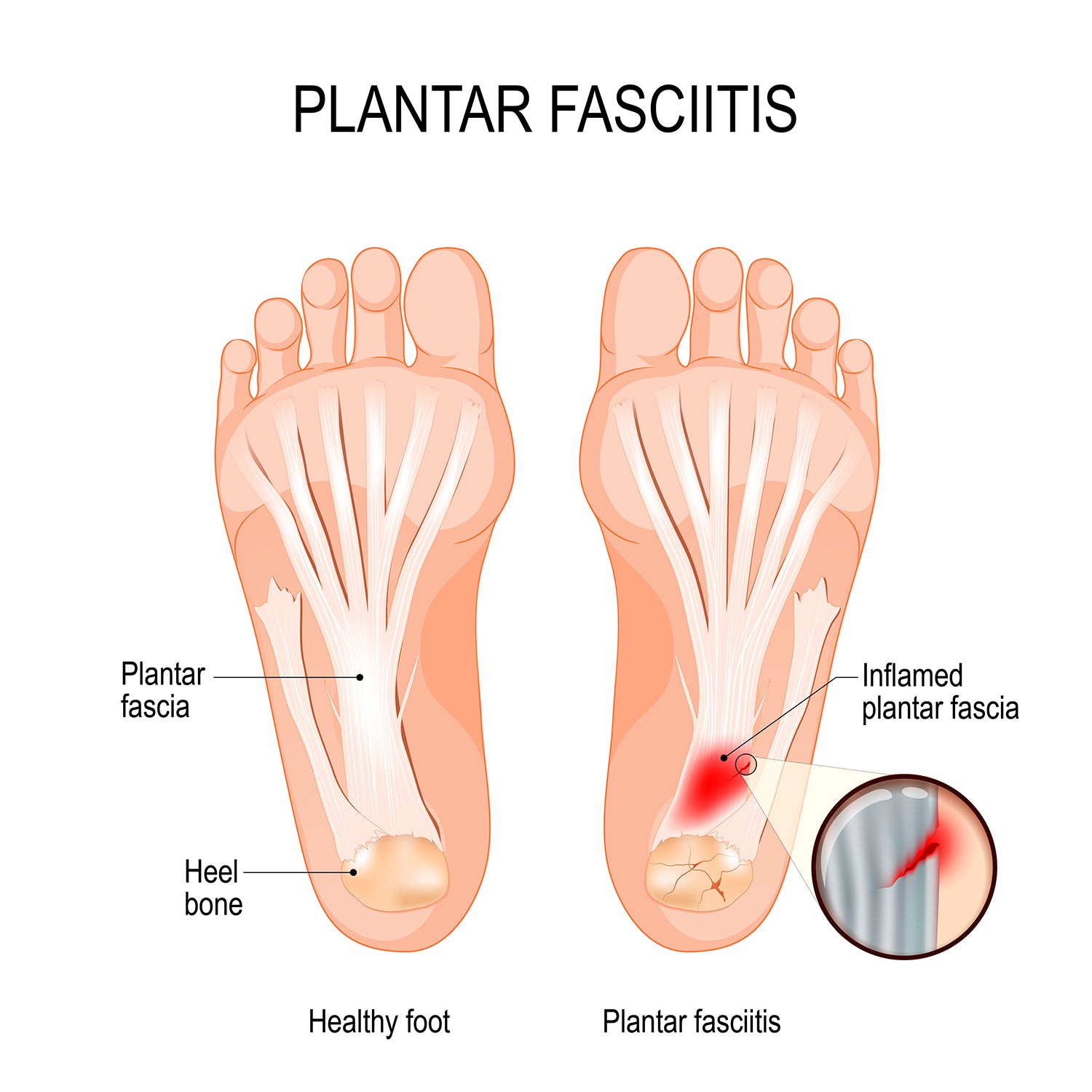Plantar Fasciitis - Causes and Treatment
 A common and often painful condition, plantar fasciitis affects the bottom of the foot, particularly the heel area. It occurs when the plantar fascia, a thick band of tissue that connects the heel bone to the toes and supports the arch of the foot, becomes inflamed or strained. There are several factors that can contribute to plantar fasciitis, including:
A common and often painful condition, plantar fasciitis affects the bottom of the foot, particularly the heel area. It occurs when the plantar fascia, a thick band of tissue that connects the heel bone to the toes and supports the arch of the foot, becomes inflamed or strained. There are several factors that can contribute to plantar fasciitis, including:
- Overuse or excessive strain: Running, walking long distances, standing for extended periods, or any activity that involves repetitive motions in the foot can lead to overuse and irritation of the plantar fascia.
- Poor footwear: Wearing shoes with inadequate arch support, cushioning, or improper fit can put extra stress on the plantar fascia, increasing the risk of developing plantar fasciitis.
- Foot biomechanics: Abnormal foot mechanics, such as flat feet, high arches, or an uneven gait, can alter the way the plantar fascia functions, making it more susceptible to injury.
- Obesity: Excess body weight adds strain on the feet and can contribute to the development of plantar fasciitis.
- Age: Plantar fasciitis is more common in middle-aged and older individuals due to the plantar fascia losing elasticity and becoming less flexible with age.
The primary symptom of plantar fasciitis is pain and stiffness in the heel or arch of the foot that is typically most severe when taking the first steps in the morning or after prolonged periods of rest. The pain can also worsen after physical activity. If left untreated, plantar fasciitis can become a chronic condition, so early intervention through rest; stretching exercises; orthotic shoe inserts; and in some cases, medical treatments like physical therapy or corticosteroid injections may be necessary to alleviate the discomfort and promote healing.
SYMPTOMS OF PLANTAR FASCIITIS
Plantar fasciitis feels like a stabbing or aching heel pain when you take your first steps in the morning. It can often lead to arch pain; if left untreated and the strain on the feet continues, a heel spur may develop. Do you have foot pain? Take the Orthotic Quiz to find out what kind of insoles would work best for you.
PREVENTION OF PLANTAR FASCIITIS
There are many ways to support your feet to avoid developing plantar fasciitis. If you stand all day at work or walk on hard services, it's imperative to have proper arch and heel support in your shoes/orthotics.
- Avoid running on hard or uneven ground.
- Wear orthotics that support your arches and heel.
- Wear .
- Avoid wearing high-heeled shoes.
- Maintain a healthy weight.
TIPS FOR TREATING PLANTAR FASCIITIS
If you are feeling pain from plantar fasciitis, try these tips for relief.
- Choose footwear and orthotics that support your feet.
- Avoid walking on hard surfaces.
- Stretch the feet and calves.
- Massage the feet.
- Ice the area 10-20 minutes at a time, up to 3 times per day.
- Rest
*We are not doctors, and the information provided here is only meant for informational purposes. If you suspect you have a foot condition, please talk to your doctor so they can discuss the best solution for you.

